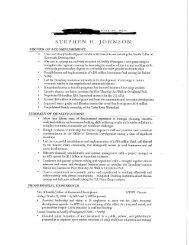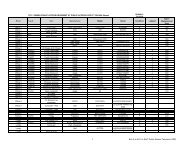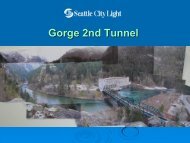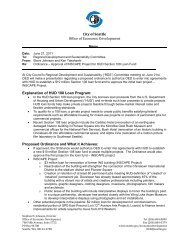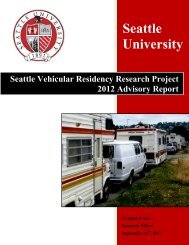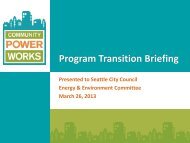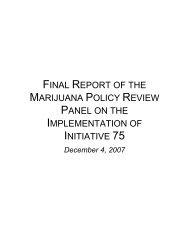2013 Water System Plan, Volume II - Seattle City Clerk's Office - City ...
2013 Water System Plan, Volume II - Seattle City Clerk's Office - City ...
2013 Water System Plan, Volume II - Seattle City Clerk's Office - City ...
Create successful ePaper yourself
Turn your PDF publications into a flip-book with our unique Google optimized e-Paper software.
<strong>Water</strong> mains crossing beneath Sound Transit Central Link light rail tracks are encased a<br />
minimum distance of 12 feet perpendicular to the centerline of the track. The tracks<br />
have a 5.5 foot minimum separation between the top of the rail and the top of the<br />
casing. See the Sound Transit Design Criteria Manual.<br />
Casings crossing a light rail line must be electrically isolated from the carrier pipe. A<br />
permanent test station should be installed to perform future isolation checks. See DSG<br />
Chapter 6, Cathodic Protection, Test Procedure (TP) 31 – Light Rail and Street Car<br />
Cooperative Interference Testing.<br />
iii Street Car<br />
The presently used street car designs have the least impact on buried pipelines of the<br />
three types of rail. Street cars are smaller and lighter, but still limit pipeline access and<br />
generate stray current.<br />
The design engineer must consider depth of cover, pipeline size, age, thickness,<br />
material, importance, and access.<br />
The design engineer should consider various pipeline protection methods ranging from<br />
do nothing to casings and protective concrete slabs.<br />
D. Parallel Rail Installations<br />
For worker safety, parallel mains should not be closer than 15 feet from the rail center<br />
line. However, rail installation will likely have to be considered case by case.<br />
5.6.3.8 Permanent Restraint <strong>System</strong>s<br />
Restraining of forces due to internal pressure at fittings, valves, or dead ends is a major<br />
consideration in pipe installation. Thrust restraint is by welded or mechanically restrained joints<br />
or poured in place concrete thrust blocks depending on pipe size and type.<br />
All bends, fittings, and line valves must be restrained by a joint restraint system compatible with<br />
the pipe type.<br />
A. Thrust Restraint Calculations<br />
For all projects requiring thrust restraints beyond that required by Standard <strong>Plan</strong>s 330a,<br />
330b, 331a, and 331b, the design engineer must calculate the thrust restraint.<br />
Restrained joint pipe is self-restrained. The restrained length for pipe and fittings<br />
depends on the test pressure, backfill, depth, soil characteristics and pipe coating. The<br />
design engineer must calculate the restrained length for both pipe and fittings.<br />
B. Connecting to the Existing <strong>System</strong><br />
In the SPU water system, most connections to existing (non-steel pipe) are unrestrained.<br />
A difference in outside diameters of various materials can create a force imbalance at<br />
the connection similar to that of a reducer.<br />
For example, a 100-year-old cast iron, 20-inch-diameter water main could be ½-inch<br />
greater in outside diameter than a new 20-inch-diameter ductile iron main. This force<br />
imbalance must be accounted for at the connection, especially if corrosion preventative<br />
isolation couplings are used to make the connection. At 100 psi, this difference in<br />
5-24 SPU Design Standards and Guidelines



